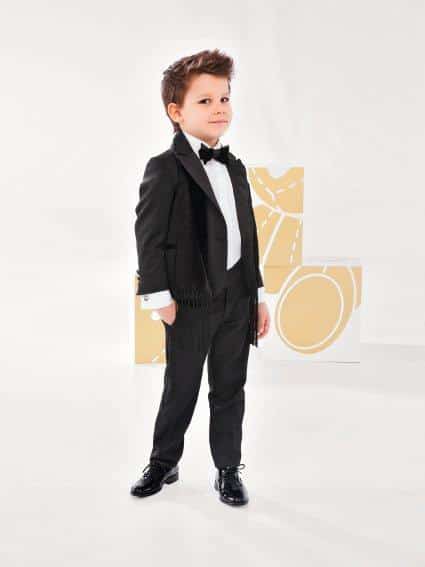Business Target Market: When Babies Start Wearing Gucci (Again)

These past few years have been tough due to the economic recession. Fortunately, the economy is slowly recovering from this with a rising trend in the stock market.
Although, many find this hard to believe since according to a recent Pew Research Center report, only 7% of the nation’s population (the richest) felt the economic relief with their household net worth rising up by 28%. The rest of the 93% had their net worth go down by 4%. This is because these affluent households have assets on stocks and financial holdings, giving them such advantage.
Fortunate are those in the luxury baby business since these are the people who can afford and purchase luxurious baby products. They are certainly spending more these days than in recent years due to the considerable increase in their wealth. This article discusses the luxury baby market, where it’s possibly headed in the future, and what businessmen can learn from defining their target market.
Image via Luxury Facts
There is good news for those in the luxury baby market. According to Businessweek, the industry is expected to bounce back by 2014 with a 4.3% growth—i.e., $10.6 billion, up from 9.4 billion in 2008. According to Michael Silverstein, senior vice president of Boston Consulting Group and author of Trading Up, “pure baby luxury brands are the next wave” while the future of known luxury brands going into the luxury baby market may not be as bright. This means focusing alone on the target baby market may prove profitable allowing for more innovative ventures, eventually gaining consumers’ trust and loyalty.
Meanwhile in India, there seems to be a growing trend among parents looking for luxury baby products for their kids. According to Cecilia Morelli-Parikh of Le Mill, the kid’s wear market has been successful these days and that people are keener to spend on high quality products. She says, “Parents are looking for great design and quality and definitely there are some kids’ labels out there that offer this”. However, it may be too early to expect a significant demand from consumers at this point since only a few can afford to buy luxury baby products, making it difficult to map out the possible market. Nevertheless, international brands are tapping into this global trend in the country.
Nowadays, brand consciousness begins even before the child is born with parents splurging on luxurious baby products for their born-to-be. Babies, especially those of the rich and famous, are somewhat seen as status symbols by the way they dress, by what they have, etc. And it seems there’s no stopping it anytime soon. Media’s definitely taking advantage of this to influence people’s perspective on the luxury baby market as well as their purchasing choices.
For instance, people are currently raving about Kate Middleton’s baby shopping and are looking for tips as to where they can get great baby items. This shot the media to an all-time high by bombarding people with the latest baby product purchases the Duchess made and which the people happily feasted on.
Media is indeed influential as in the case when the Bugaboo Frog stroller was featured in one of the Sex and the City episodes and, according to personal finance expert Helaine Olen, the stroller market rose up. Now, everything else seems reasonable, even an $800 high chair! The market has also taken playground equipment in residences up a notch with extravagant playgrounds and tree houses available for the affluent households, thanks to Suri Cruise’s $100,000 tree house (complete with water and electricity) extravaganza. This goes to show that people are not only curious but are also looking to media for purchasing advice and trends.
So, what’s next for the baby market?
Future of Baby Products
According to Euromonitor International, there is an expected 9% increase, reaching 2.5 billion by 2016, in constant value terms among baby and child-specific products. Birth rate in the US is expected to remain “virtually flat” thereby limiting “growth opportunities for baby-specific products outside of the premium natural/organic offerings”. However, market products targeted towards older children are expected to grow considerably.
Consumer confidence is slowly gaining momentum with consumers taking extra caution when spending. Although when it comes to their young ones, nothing says luxury more than quality.
A Note to the Business Sector
In today’s difficult times, it’s wise to study the purchasing power and willingness of target consumers. It’s not enough to simply produce sustainable products, although, there will always be those willing to pay in the name of quality.
Businessmen ought to focus on who their target market is so their business would take a more cohesive route, enabling them to concentrate on doing what they do best and how else to improve it.
Never underestimate the power of media. In this digital age, it’s easier to influence people since they are constantly exposed to media personalities and media itself. Brand awareness is now easily created and magnified through word-of-mouth marketing. As long as a high-profile media personality is seen endorsing a product in some way, it won’t be long until the brand is embedded unto the consciousness of netizens that will eventually affect their purchasing activities.
Lastly, learn from history. Business analysts usually study past and recent trends that’ll enable them to project where the market is headed. When cleverly utilized, it creates a competitive edge for the company against other aggressive competitors and propels them at the market’s forefront. Be sure to foresee problems and drive solutions early on.
Category: Business Growth & Strategy Customer Engagement Financials
Tags:


